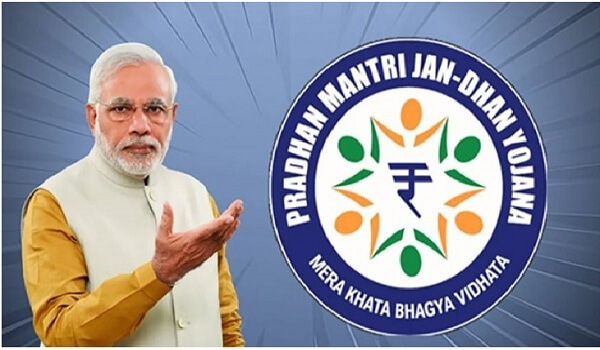The year 2024 marks the tenth year of the Pradhan Mantri Jan-Dhan Yojana (PMJDY). PMJDY was launched ten years ago on 28th August, 2014.The government aims to open more than 3 crore accounts under the PMJDY during the current financial year 2024-25.
PMJDY
- PMJDY is a financial inclusion program that aims to ensure access to financial services, namely, basic savings & deposit accounts, remittance, credit, insurance, pension in an affordable manner.
- Under the scheme, a basic savings bank deposit (BSBD) account can be opened in any bank branch or Business Correspondent (Bank Mitra) outlet, by persons not having any other account.
Features
- No Minimum Balance: There is no requirement to maintain any minimum balance in PMJDY accounts.
- Free Debit Card: Free Rupay Debit card is provided to PMJDY account holders.
- Accident Insurance: Accident Insurance Cover of Rs.1 lakh (enhanced to Rs. 2 lakh to new PMJDY accounts opened since 2018 is available with RuPay card issued to the PMJDY account holders.
- OD Facility: An overdraft (OD) facility up to Rs. 10,000 to eligible account holders is available.
- DBT Benefits: PMJDY accounts are eligible for DBT, Pradhan Mantri Jeevan Jyoti Bima Yojana (PMJJBY), Pradhan Mantri Suraksha Bima Yojana (PMSBY), Atal Pension Yojana (APY), Micro Units Development & Refinance Agency Bank (MUDRA) scheme.However, there is no mandatory free cheque book facility with a PMJDY account. Banks can issue cheque books on PMJDY accounts which may/may not be priced.
Achievements of Pradhan Mantri Jan-Dhan Yojana
- Account Expansion: PMJDY has moved from the modest beginning with 147 million accounts opened in March 2015 to a mammoth 520 million accounts in March 2024.
- Deposit Mobilisation: The deposit mobilisation was Rs 15,600 crore in March 2015 which increased to Rs 2.32 trillion in March 2024. The deposit mobilisation grew at a compound average growth rate of 30% over the last 10 years.Average balance increased from Rs 1,065 in March 2015 to Rs 4,476 in March 2024, nearly quadrupling in the last decade.
- Expansion of Banking Infrastructure: Over 1.3 million banking touch points have been mapped on the Jan Dhan Darshak (JDD) App. A total of 601,000 villages are mapped on the JDD app as of July 2023. Out of these, 599,468 (99.7%) of total mapped villages are covered with banking outlets (bank branch, banking corner, or Indian Post Payment Banks within 5 km radius).The Jan Dhan Darshak App is a mobile application that helps citizens locate banking touchpoints like branches, ATMs, Banking Correspondents (BCs), IPPBs etc.
- Rural-Urban Parity: As per Ministry of Finance, PMJDY achieved a milestone of a total of 53.13 crores PMJDY accounts out of which 55.6% (29.56 crores) Jan-Dhan account holders are women and 66.6% (35.37 crores) Jan Dhan accounts are in rural and semi-urban areas.
- Boost in Digital Payments: The total number of UPI financial transactions have increased from 920 million in Financial Year (FY) 2018 to 131.2 billion in FY 2024. Similarly, total number of RuPay card transactions at point of sale (PoS) and e-commerce have increased from 670 million in FY 2018 to 1.26 billion in FY 2023.
- Direct Benefit Transfer (DBT): PMJDY transferred about USD 361 billion directly to beneficiaries from 53 central government ministries through 312 key schemes.During Covid-19, the PMJDY accounts were instrumental in one-time ex gratia payment of Rs 500 per month for three months (April, May and June 2020) under Pradhan Mantri Garib Kalyan Yojana (PMGKY), benefiting 206.4 million women account holders..
- Overdraft (OD) Accounts: As of March 2024, a total of 1,17,701 overdraft facility have been opened with a sanctioned amount of Rs 190 crore to such PMJDY account holders. The limit utilisation stands at 80.5%.It has ensured access to credit from the formal financial system for the poorest of the poor.
- Low Zero Balance Accounts: Although zero balance accounts are permitted under PMJDY and maintenance of minimum balance is not mandatory, only 8.4% accounts have zero balance.
- Praised by the World Bank: As per the World Bank, India has achieved as much in just six years what would have taken about five decades. The Jan Dhan-Aadhaar-Mobile (JAM) trinity has propelled the financial inclusion rate to 80% of adults from 25% in 2008, a journey shortened by up to 47 years and made possible due to Digital Public Infrastructure (DPI).
Challenges Associated with PMJDY
- Multiple Accounts: The lure of getting a large insurance cover, accidental death benefit cover and overdraft facility prompt people to open multiple accounts in different banks using different identification documents like Aadhaar card, PAN card etc.
- Economic Burden on Banks: Too many accounts with persistent low balance creates financial problems for banks in managing them.
- Money Laundering: There are concerns that Jan Dhan accounts owned by the poor are used in money laundering by black money operators.Jan Dhan accounts were used to launder money after demonetisation.
- Declining Overdraft facility: Providing OD facility is the discretion of the concerned banks. Many banks decline to extend the OD facility therefore defeating the purpose.
- Misusing Authority: Sometimes Business correspondents (BCs) misuse the authority and make the life of people below poverty line miserable.
- BCs may charge extra fees for services that are supposed to be free or have minimal costs, such as opening bank accounts, processing transactions, or providing loans.
- Bad Loans: It is a possibility that the overdraft facility could end up as bad loans for banks as the scheme does not spell out how the banks can collect debts.
- With many debt waivers in the past, people may end up treating the loans as freebies.
- Financial and Technology Illiteracy: There is a lack of awareness, knowledge and skills among rural people to make informed decisions about savings, borrowings, investments and expenditure. A survey conducted by financial services giant Visa revealed that 65% of Indians lack financial literacy.

